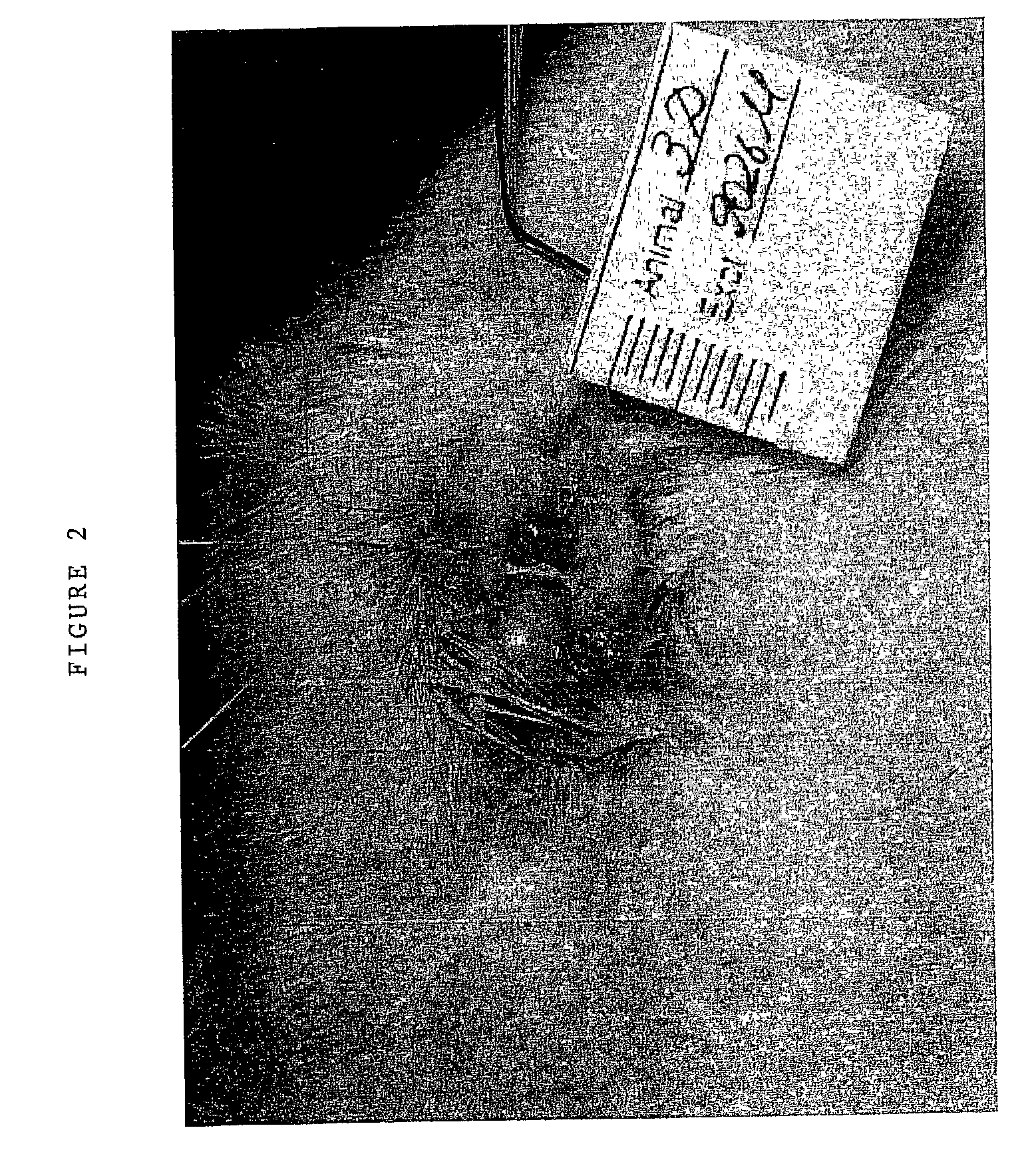Compositions comprising microspheres with anti-inflammatory properties for healing of ocular tissues
a technology of ocular tissues and compositions, applied in the field of compositions of microspheres with wound healing capacity, can solve the problems of affecting the healing of ocular tissues, disrupting the epithelial surfaces of the eye, and affecting so as to promote the healing of the eye and prevent ocular injury. , the effect of treating or preventing ocular injury
- Summary
- Abstract
- Description
- Claims
- Application Information
AI Technical Summary
Benefits of technology
Problems solved by technology
Method used
Image
Examples
example 1
[0084] Effect of Microspheres on the Epithelialization of Corneal Erosions Caused by Chemical Burns.
[0085] The microspheres of the present invention were demonstrated to significantly reduce inflammatory reaction of eye caused by a severe chemical burn.
[0086] Chemical burns were produced by a standardized filter paper disc soaked with 5N NaOH applied onto the left eyes of six New Zealand albino adult rabbits (weight 2.5-3.5 kg), to test the effectiveness of the present invention. The wounds of the three control rabbits were treated with DMEM (vehicle control). The wounds of the three test rabbits were treated with Polyheall, one particular embodiment of the present invention. Polyheall is composed of polystyrene microspheres with a size distribution 1-10 micron, when at least 80% of the particles ranged between 3-7 microns in diameter, in a concentration of 4.5.times.10.sup.6.+-.25%, particles / mL. The solution has a pH between 7 and 9 with a zeta potential not higher than -60 mV. Th...
example 2
[0092] Eye Irritation Test
[0093] Acute Eye Irritation / Corrosion in the Rabbit
[0094] OECD Guideline for the Testing of Chemicals, Section 4, No. 405, "Acute Eye Irritation / Corrosion", adopted Feb. 24, 1987, Draft Revised Guideline 405, March 2000. Assessment of the potential of the Test Item POLYHEAL 1 and x10 Polyheal 1 to produce eye irritation / corrosion by single dose ocular instillation and limited exposure of the anterior surface of the rabbit eye, thereby providing information on health hazards likely to arise from its exposure under conditions of its projected use as a wound healing stimulator.
[0095] Test System:
[0096] Six female (New Zealand White rabbits, weight not less than 2.5-3.5 kg) were divided on two groups. 3 animals were treated with Polyheal 1 and other 3--with ten-fold concentrated microspheres suspension.
[0097] Pre-Test Preparations of Animals:
[0098] Approximately 24 hours before dosing, both eyes of each test animal provisionally assigned to testing are examined...
PUM
| Property | Measurement | Unit |
|---|---|---|
| diameter | aaaaa | aaaaa |
| diameter | aaaaa | aaaaa |
| diameter | aaaaa | aaaaa |
Abstract
Description
Claims
Application Information
 Login to View More
Login to View More - R&D
- Intellectual Property
- Life Sciences
- Materials
- Tech Scout
- Unparalleled Data Quality
- Higher Quality Content
- 60% Fewer Hallucinations
Browse by: Latest US Patents, China's latest patents, Technical Efficacy Thesaurus, Application Domain, Technology Topic, Popular Technical Reports.
© 2025 PatSnap. All rights reserved.Legal|Privacy policy|Modern Slavery Act Transparency Statement|Sitemap|About US| Contact US: help@patsnap.com


